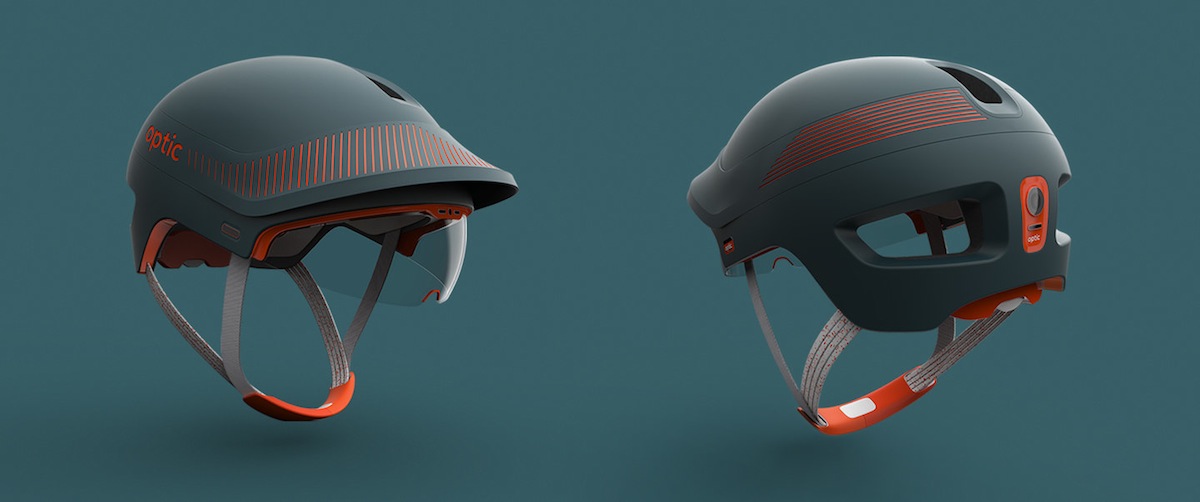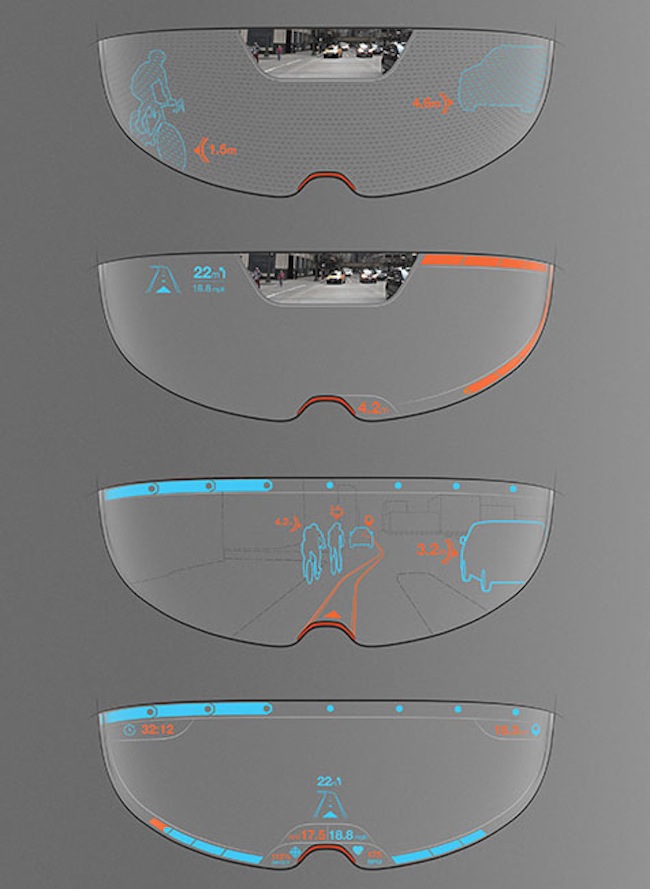
An augmented-reality helmet that gives cyclists a 360-degree view of the road could help prevent accidents, according to the device's designers.
Unlike cars, bicycles don’t come with rearview mirrors, which is why British product design firm DCA created the Optic helmet. The futuristic-looking headgear features front and rear cameras and a drop-down visor that can overlay live-streaming footage from the rear camera onto a rider's field of view.
The visor can also display proximity warnings, such as if a vehicle is overtaking the rider, and alert them to potential collisions by combining data from the cameras and ultrasonic sensors on the front and back of the helmet. [10 Technologies That Will Transform Your Life]
In addition, the Optic helmet can overlay GPS navigation information and journey statistics for riders who want to track their performance. The design is currently just a concept, but it won "Best of the Best" at the prestigious Red Dot Design Awards last month.
Richard Price, an industrial designer at DCA and the brains behind the project, said the helmet is aimed at combatting the roughly 20,000 cycling causalities that happen in the United Kingdom ever year, but he was also inspired by his own experiences as a cyclist.
"There have been times when I've been cycling to work where there's been some obstacle in the road or a junction and I've had to look over my shoulder while signaling," he told Live Science. "When you do that, often something suddenly appears in front of you and there's been quite a few times where I've had to slam on my breaks."
Because the helmet is still just a concept design, some of the nuts and bolts have yet to be decided, such as the exact method for projecting video onto the visor. However, Price said Google Glass has already shown this is feasible, as has a motorcycle helmet designed by a firm called Skully, which also projects a feed from a rearview camera onto a visor.
Get the world’s most fascinating discoveries delivered straight to your inbox.
The Optic helmet will be able to connect to a smartphone via Bluetooth, to allow maps and routing information to be uploaded, but actual navigation will be carried out by the helmet using its onboard GPS unit, according to DCA. It can be controlled either by a touchpad next to the visor or by using gestures picked up by the front camera. [Top 10 Inventions that Changed the World]
Users can customize what is shown on the visor to suit their needs and to ensure the display doesn’t become distracting, Price said. "They can decide for themselves what is unobtrusive and what they can deal with," he added.
The bulk of the electronics are in the top of the helmet, which, Price says, is the area statistically least likely to be impacted during a crash. The electronics package includes a memory card to record the video feeds in case the cyclist wants to review any incidents. These recordings can be accessed via Bluetooth, and Price added that they deliberately designed the helmet so that the rear camera is very obvious.
"We draw attention to it to show other road users that they are under surveillance," he said. "This links to the trend of people having recording equipment attached to their helmet, the idea being that people will drive more safely if they know they're being record."
Since the designs were made public, Price said the design firm has received plenty of positive feedback from cyclists and cycling gear companies. But, actually commercializing the device will require a considerable investment, so it's unclear when, or if, the helmet will be available to consumers.
Dan Salisbury, a senior industrial designer at DCA who helped Price with the helmet, said initial conversations with helmet companies have suggested an easier route to market might be to create a kit that can be retrofitted to existing helmets.
This could be a first step before integrating the technology into a full helmet and would also give users more choice by allowing them to simply attach the system to their favorite helmet.
"Some people might want a more aggressive sporty style or a more vintage one, that's why it might make more sense to create technology that doesn't come with a helmet, but fits to one you already have," Salisbury said.
Original article on Live Science.





